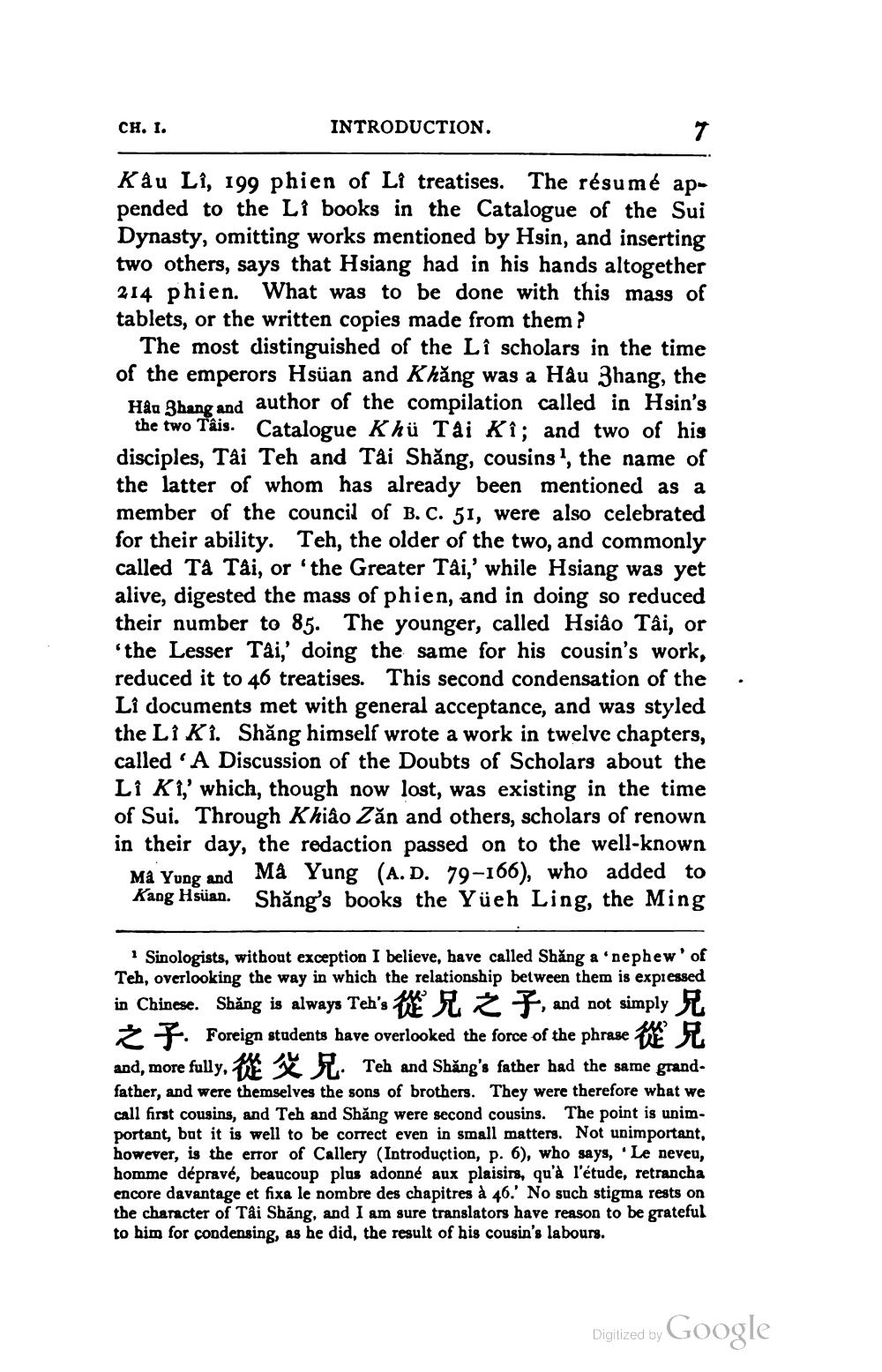________________
CH. 1.
INTRODUCTION.
Kêu Lĩ, 199 phien of LỄ treatises. The resume appended to the Li books in the Catalogue of the Sui Dynasty, omitting works mentioned by Hsin, and inserting two others, says that Hsiang had in his hands altogether 214 phien. What was to be done with this mass of tablets, or the written copies made from them?
The most distinguished of the Lî scholars in the time of the emperors Hsian and Khăng was a Hâu Zhang, the Håg Shang and author of the compilation called in Hsin's
the two Tâis. Catalogue Khü Tai Ki; and two of his disciples, Tâi Teh and Tài Shăng, cousins 1, the name of the latter of whom has already been mentioned as a member of the council of B. C. 51, were also celebrated for their ability. Teh, the older of the two, and commonly called Ta Tâi, or 'the Greater Tai,' while Hsiang was yet alive, digested the mass of phien, and in doing so reduced their number to 85. The younger, called Hsiao Tâi, or 'the Lesser Tai,' doing the same for his cousin's work, reduced it to 46 treatises. This second condensation of the Li documents met with general acceptance, and was styled the Li K 1. Shăng himself wrote a work in twelve chapters, called 'A Discussion of the Doubts of Scholars about the Li K 1,' which, though now lost, was existing in the time of Sui. Through Khiâo Zăn and others, scholars of renown in their day, the redaction passed on to the well-known Ma Yung and Må Yung (A.D. 79-166), who added to Kang Hišüan. Shăng's books the Yüeh Ling, the Ming
1 Sinologists, without exception I believe, have called Shăng a 'nephew of Teh, overlooking the way in which the relationship between them is expressed in Chinese. Shăng is always Teh's Tale on r Ź F, and not simply R
Ź F Foreign students have overlooked the force of the phrase T R and, more fully. The R. Teh and Shăng's father had the same grandfather, and were themselves the sons of brothers. They were therefore what we call first cousins, and Teh and Shăng were second cousins. The point is unimportant, but it is well to be correct even in small matters. Not unimportant, however, is the error of Callery (Introduction, p. 6), who says, 'Le neveu, homme dépravé, beaucoup plus adonné aux plaisirs, qu'à l'étude, retrancha encore davantage et fixa le nombre des chapitres à 46. No such stigma rests on the character of Tai Shăng, and I am sure translators have reason to be grateful to him for condensing, as he did, the result of his cousin's labours.
Digitized by Google




